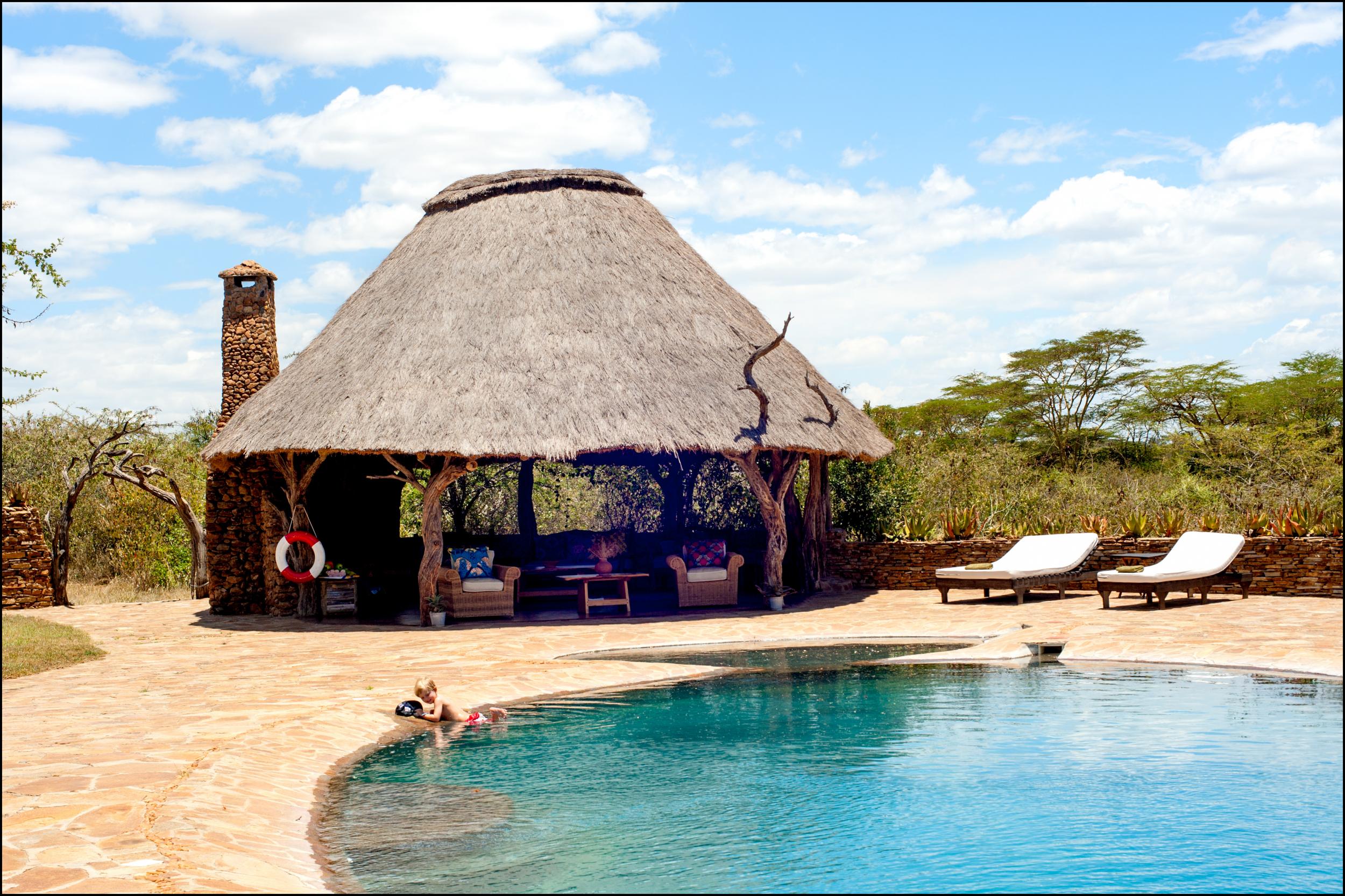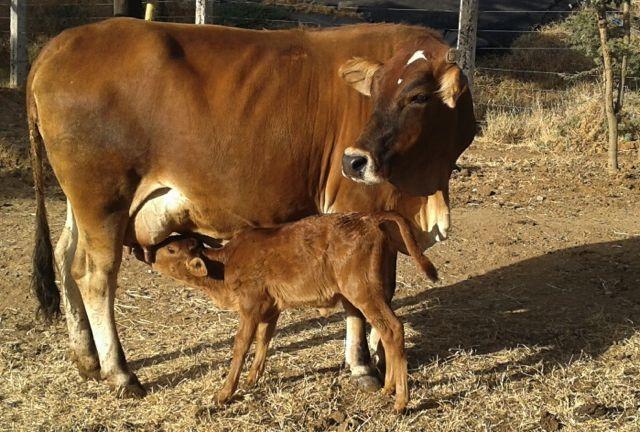Kenyan conservancy profits from mixing wildlife, tourism and cows
Raising cattle and protecting wildlife habitat do not need to be mutually exclusive, as this ranch in Kenya shows

Your support helps us to tell the story
From reproductive rights to climate change to Big Tech, The Independent is on the ground when the story is developing. Whether it's investigating the financials of Elon Musk's pro-Trump PAC or producing our latest documentary, 'The A Word', which shines a light on the American women fighting for reproductive rights, we know how important it is to parse out the facts from the messaging.
At such a critical moment in US history, we need reporters on the ground. Your donation allows us to keep sending journalists to speak to both sides of the story.
The Independent is trusted by Americans across the entire political spectrum. And unlike many other quality news outlets, we choose not to lock Americans out of our reporting and analysis with paywalls. We believe quality journalism should be available to everyone, paid for by those who can afford it.
Your support makes all the difference.Dry grass and occasional shrubbery dot Endana, a vast rural settlement about an hour’s drive from Nanyuki town in Kenya’s Laikipia County. Generally a dry area, there are few crop farming activities.
Here, rough terrain prevails and predators roam wild and free. However, despite the harshness of the conditions, and the threat from the ever marauding wildlife, one conservancy has managed to successfully keep livestock in the area.
At the heart of Endana sits the El Karama Conservancy, a magnificent ranch that sits on a 14,000-acre piece of land in the rough countryside. El Karama is committed to conservation agriculture and holistic grazing aimed at preserving, protecting and restoring the natural environment and protecting wildlife. The quintessence of the ranch however are the cattle that are kept.
The ranch has two authentic dual purpose cattle breeds: Sahiwal, which is a dual purpose variety of the Bos indicus breed of cattle native to Pakistan, and Fleckvieh, which is similarly a dual purpose variety of the Bos taurus cross breed from Germany.
However, the Sahiwals form the core of the ranch. El Karama’s manager Mike Nicholson says they settled on the breed because of their hardy nature; the ability to tolerate the dry conditions and having the ability to withstand numerous livestock pests and diseases, and the ability produce high quality and abundant meat and milk.

“We have 154 mature Sahiwal bulls and weaners, 600 mature Sahiwal and Fleckvieh cows, and 20 Friesian heifers which aren’t yet milkers,” says Mr Nicholson.
He notes that at maturity, most of the bulls weigh from 800kg to 1,000kg each, with their 12 milkers each producing an average of 17 litres of milk per day.
“At the end of every day, the ranch gets 190-210 litres of milk which we sell to five contracted buyers in wholesale amounts at 30p per litre which they in turn sell to the locals at 40p per litre,” says Christine Ngaru who is in charge of the dairy section, adding that they milk the cows at 7am and 5pm.
She says that the ranch’s dairy section has integrated automated mechanised milking technology hence easing the entire process, making it easy for the eight employees.
The entire ranch employs 20 people from the local community, and others from across Kenya. James Kariuki, one of the contracted wholesale buyers says the breed produces “thick” superior quality milk compared to other breeds hence its preferred by customers.
The consumers seem happy but it hasn’t been smooth sailing.
“Wildlife roaming the area tend to transmit diseases such as presenilin 1 (Ps-1), a ferocious strain of East Coast Fever (ECF) which comes from the buffalo, anaplasmosis and contagious abortion which results in brucellosis or meningitis if one consumes milk from the infected cow,” says Ms Ngaru.
The farm, however, strives to keep the wildlife away from the cattle to minimise the risk of diseases.
“The diseases come from the northern side of the ranch and especially from the buffalo which graze here. We vaccinate all our cattle and spray them with necessary chemicals to kill pests that transmit the diseases.
Herders from neighbouring areas such as Samburu and Isiolo counties have also for a while been targeting the ranch to graze their livestock causing clashes. Wildlife such as lions also sometimes attack the herders and cattle in the ranch.
“We, however, have created a good rapport with the neighbouring communities hence they support us in such times and also offer some security to the ranch,” says Jackson Kombo, the head of security at the ranch.
And being a dry area, providing water and fodder for the livestock is always a huge challenge.
To alleviate water problems, the ranch has built seven dams and a two million-litre reservoir tank which is usually leaving the water in the nearby Ewaso Nyiro River to wildlife.
“We hardly use water from the Ewaso Nyiro River as we have our own reservoirs that supply all the water we need to run the ranch.
Feeding the livestock involves herding the cattle in the ranch from 8am to 4pm.
The ranch has also ventured in fodder cultivation with Lucerne, Rhodes grass, and barley grown on about 300 hectares.
“We feed the cattle, especially the milkers, on these special feed and also minerals and salt licks each evening after their milking to boost their productivity,” notes Ms Ngaru.
In their fodder cultivation, Mr Nicholson notes that the ranch incorporates diverse techniques of conservation agriculture such as zero tilling, water banking and organic farming where no chemicals are used in order not to harm the wildlife and ecosystem.
They have also partnered with the Kenya Wildlife Service who train their security personnel on how to deal with wildlife including lions, elephants, buffaloes and zebras, so that they understand their behaviour in an environment which has domestic life, hence maintaining a peaceful coexistence between the livestock and wildlife.
“Our herders herd the cattle from the front as opposed to from behind which ensures the wildlife do not attack the cattle. The livestock are free from pests and diseases as they do not mingle with the buffaloes and zebras and a ‘barrier’ is created so that both the livestock and wildlife graze without interfering with each other’s territory,” says Mr Nicholson.
He adds that to further mitigate the effects of the drought, the ranch in is in partnership with Northern Rangelands Trust Trading, an company linked to the Northern Rangelands Trust NGO, which provides seeds, fuel and fences while the ranch provides land, equipment and know-how, and have embarked on growing fodder, which they sell to the community for a profit and also allow herders from other regions to graze in the ranch but for a small fee.
He notes that through the project they aim to reduce human-wildlife conflict in the area which has largely been brought about by illegal grazing by herders from neighbouring counties. The project also hosts cattle from Isiolo pastoralists giving them grass at a fee to fatten the bulls which are then sold at good prices at the benefit of the pastoralists.
“We are intrinsically connected to the North. They have the wildlife and the cattle and we have the fodder so we are trying to create a business model with them where they only pay us grazing fees,” says Mr Nicholson.
According to Ronald Kimitei, a dairy expert from Egerton University, a Kenyan agricultural university, Sahiwal is a dual purpose animal that does well in arid and semi-arid conditions, and in an ecological zones 3 to 5 which has conditions not ideal for conventional dairy animals.
He, however, says that while fleckvieh, a cross breed between dairy and beef cattle, is good in milk production rivalling Friesian, is not as disease and drought tolerant as the Sahiwal.
“Friesian is a purely dairy animal which can produce 20 litres of milk on average in a day but Sahiwal is dual purpose which rarely goes beyond an average of 10 litres in a day with highs of 12 litres, while fleckvieh produces an average of 12 and 16 litres in a day but can go as high as 20 litres,” says Mr Kimitei.
He adds that the climatic conditions in Nanyuki favour the two breeds with fully mature healthy Sahiwal bulls sometimes weighing over 1000kg and weaners of 4 months between 160 and 200kg.
He points out that the co-existence between cattle and wildlife is possible but has a major challenge, which is diseases.
“The most common diseases that the cattle will be faced with are tick borne diseases like ECF and red water which can be controlled through vaccination, and regular dipping and spraying,” he says.
For more information about El Karama Lodge visit www.elkaramalodge.com
This article is reproduced here as part of the Giants Club African Conservation Journalism Fellowships, a programme of the charity Space for Giants and supported by the owner of ESI Media, which includes independent.co.uk. It aims to expand the reach of conservation and environmental journalism in Africa, and bring more African voices into the international conservation debate. Read the original story here
Join our commenting forum
Join thought-provoking conversations, follow other Independent readers and see their replies
Comments